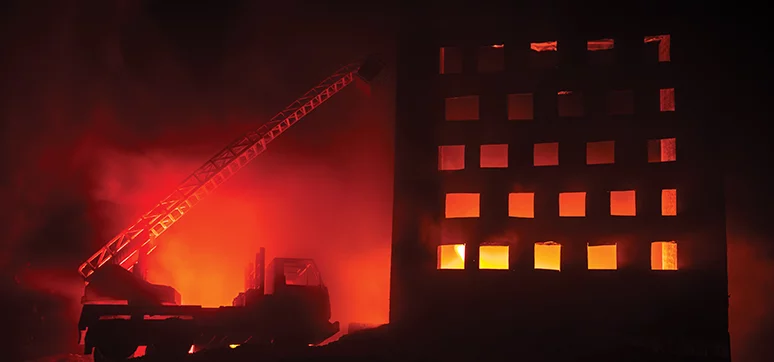A Holistic Approach To Fire Safe Facades

Façade is one of the most vulnerable elements of a building, especially in case of a fire incident. With more attention to aesthetics, cost factor, energy efficiency, eye-catching materials, green concept, etc., considerations of fire safety measures have been slipped under the radar. The scenario has become more complex with the unstoppable mushrooming of high-rise buildings which pose a greater fire hazard.
The role of a façade is as complex as the building itself as it needs to strike a balance between all the parameters such as aesthetics, visual character, structural stability, solar heat gain, daylight filtration, visibility, thermal comfort, branding and programmatic zoning, among other aspects, notes Vijay Kumar Shaw, Assistant General Manager – BD (West Zone), Alstrong Enterprises India. Due to its complex nature, usually, designers opt to harness the potential of a façade to either aesthetic effects or to building performance.

Fire safety is the most important aspect in designing tall structures. Architects and fire engineers need to look at the three key performance parameters of building fire safety provisions and equipments: building design planning, safe passage of people during the evacuation, and smoke extraction during fire, says Shabbir Kanchwala, Sr. Vice President, K Raheja Corp.

Ankit Sharma (Member SFPE, Research Scholar, Mechanical and Industrial Engineering), Indian Institute of Technology, Roorkee too points out, for achieving the highest level of fire safety, both fire protection engineers and architects must work together using prescriptive and performance-based design approach. Especially in high rise buildings, façade and fenestration design must go hand in hand as both in conjunction are responsible for fire spread to other parts of the building via exterior combustible cladding. According to Deben Moza, Executive Director – Head of Project Management Services, Knight Frank India (Pvt.) Ltd., fire safety design can help to reduce fire spread and contain smoke damage and property damage. It also means safer buildings for all end users.

A well-designed, maintained, operational and functional fire protection system ensures to control the fire and helps for the fire to compromise the integrity of the façade by active cooling mechanism, notes Prem Thakur, Director, Design & Project Management, Marriott International. Abhishek Chhabra, Business Development Manager, Thomas Bell- Wright International Consultants observes that material selection needs to be based on certification and listing to ensure all properties of material and system get delivered. As more and more façade systems are custom designed, validation of design through mock-up tests and installation inspection is most important.

According to Nikhil ParasuRaman, Director – India and SAARC Region, SE Controls India, for any building type, fire & life safety, may it be active or passive, must be integrated in the initial design up to final execution and handover of the building. Following the local fire codes, the National Building Code of India (NBC) combined with best practices globally is a good starting point for a holistic approach we feel.\

In India, there are numerous fire safety-related codes and standards, however, they are scarcely followed, points out Ar. Reza Kabul, Founder & Principal Architect, ARK Reza Kabul Architects. Worse is the case when it comes to façades, it is mostly influenced by the pure considerations of alluring appearance and pricing and is yet to hit the nail on the head in terms of fire safety norms and testing methods. There is an acute lack of awareness about the characteristics of the façade materials, such as combustibility, smoke release, toxicity, ignitability, etc. that contributes to massive fire proliferation.
Therefore, active involvement of fire experts from design through to construction is very significant to help in deciding the right material for façade and correct use of these materials, states Ar. Reza Kabul. Besides, combat against potential fire hazards can only be effective when façade systems/testing are given due importance.
Role Of Design Systems In Fire Safe Buildings
Fire safety design is paramount to a building’s design and function, says Ar. Reza Kabul. Fire-safe design features can help to evacuate a building in a safe manner to preserve life, can reduce fire spread, and contain smoke damage and property damage. Fire safety measures include those that are planned during the construction of a building or implemented in structures that are already standing and those that are taught to occupants of the building. It also means safer buildings for all end users. The primary objective is to reduce the potential for death or injury to the occupants of a building and others who may become involved, such as the fire and rescue service. Fire safety is a set of practices intended to reduce the destruction caused by fire, adds Ar. Reza Kabul.
Scrutinising previous fire incidents and their consequences, all the buildings need to be designed to offer an authority having jurisdictions acceptable level of fire safety and minimise the risks from heat and smoke, advice Raikepin Rajamoni, Business Head, Sobha Façades. There are two types of fuel that are under the influence of designers – the building fabric and its contents. The fire safety of the fabric materials is often expressed in terms of its ignitability or combustibility, with particular regard to the structural elements which must remain in place for stability. The internal finishes also provide varying fire risks, such as textiles, furniture and plastics, says Shaw.
Once a fire has started, the main challenges are to control the fire spread and extinguish it in the early stages itself and provide safe escape routes for evacuation, notes Sharma. A good building design provides clear pathways for the safer and quicker evacuation of occupants. Kanchwala adds the design of the buildings should cater to wider staircases and adequate refuge floors for evacuation of people during a mishap. The latest evacuation techniques like fire evacuation chute, fire rated doors, making needful provision at ground level for smooth passage of fire engines, etc., are other key factors to consider.
Smarter projects are led by specialists including energy consultants, structural designers, façade designers, project managers, and architects, who play their respective roles to collaborate on a project. In fact, many designers have taken up the expertise of façade designing by the use of computational design techniques, namely Parametric Design and Algorithmic Design, which points out Shaw. These allow collaborations with the architects, wherein a façade design consultancy can focus on parametric design methods that allow a wide range of design possibilities and fabrication options.
Automatic Smoke Ventilation and Smoke Control must be an integral part of the façades design detail, including passive fire protection, fire separation (compartmentation) for containment and ventilation for evacuation, etc., says ParasuRaman. This should be done with the right inputs from façade ventilation experts, and must not be an afterthought. According to Ar. Reza Kabul, for a building, thermal insulation is an imperative element using noncombustible material, which increases its market price. Possible usage of combustible materials at low price, at the same time, their installation will not present an open risk of fire and damages, is important. Their position should be out of reach of the fire. The building envelope consisting of the exterior walls with windows/curtain systems that act as a barrier to the spread of fire, and the fenestration designs are key aspects in avoiding the spread of fire via the façade of the building.
Fire Engineering Design & Fire Safety Mitigation Measures
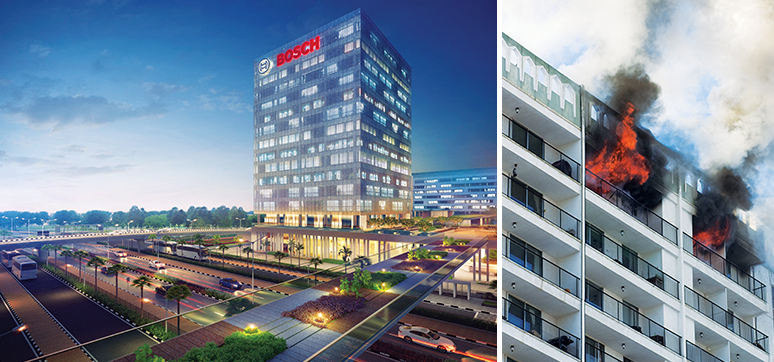

It is a challenge to design buildings to be energy efficient and environmentally-friendly, at the same time fire-safe. The most positive feature is to distribute heating and cooling. The use of natural ventilation, commonly with atria and double skin façades allows for relatively unimpeded smoke transport in the event of a fire.
Fire engineering design and fire safety mitigation measures, such as natural draught and mechanical extract systems for atria, are well developed and understood. This is not the case for double skin façades. Computational Fluid Dynamics Modelling of Prototype Buildings with a double skin façade has been carried out. Provided the vents to the double skin façade close in a fire, smoke spread via the double-skin façade is prevented. The building code, framework for fire safety design, and a normal good practice require a robustness check, that is allowing for failure of one system such as that closing off vents to the inside of the building. In the event of such a failure, the fire engineering design of a double skin façade is unlikely to be successful unless a building is sprinklered.
Deben Moza, Executive Director – Head of Project Management Services, Knight Frank India (Pvt.) Ltd
Role Of Fenestration Design In Fire Safe Buildings
What exactly is fenestration and how does it make a positive impact?

Fenestration is the arrangement and design of windows and other glazed elements in a building. It covers a range of products, including windows, curtain walls, skylights, window films and glazed doors. Whether it is aesthetics or performance, fenestration options can have a profound and transformative impact on building design, says Shaw. In order to make the wisest decisions, architects need to stay informed about the latest trends, innovations, and performance requirements. They must understand how to maximise efficiencies in their projects.
Wrong placement of ventilation during a fire can reduce heat flow to sprinklers and fire alarms and thus reduce their time of action, says Sharma. With ventilation, fire spreads more quickly as it provides fresh oxygen increasing fire intensity. It has been observed in different research studies that the height and width of openings have a greater influence on the height of window ejected façade flames and hence flame spread.
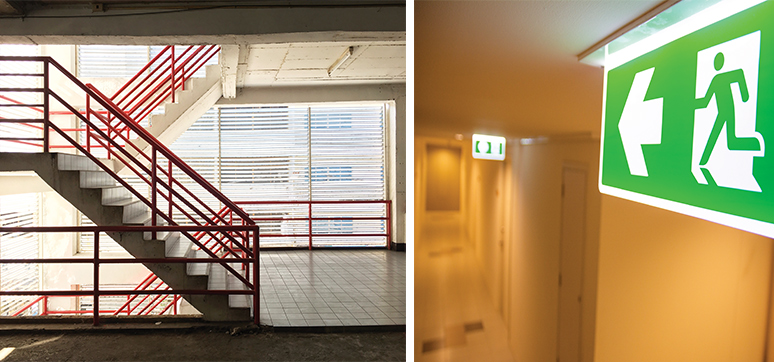
The main performance features manufacturers may offer are superior fire-resistant and fire protective safety glass, including fire-rated doors, systems, and curtain walls; intruder-, impact-, bullet-, and hurricane-resistant glass; fire-rated ACP and other clear fire-rated glazing products that protect from 20 to 180 minutes. Often, these products combine a minimalistic appearance with maximum safety and performance, adds Shaw. Products offering high performance and human safety, also meeting building code requirements, are available. One can achieve a better design aesthetic with larger sizes that allow to specify a passive rather than active system, such as sprinklers.
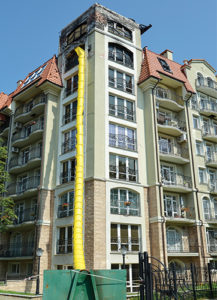
Kanchwala adds that choosing the right materials which are fire retardant, proper designs with ventilation in basements, ventilators in other parts for smoke escape and rescue of entrapped people during mishaps are essential. Thakur stresses on the overall selection of insulation in spandrel, wall-window ration and non-combustibility of the façade glass, which would play an important role. He adds that control of the wall window ratio helps in reducing the façade element exposure to the fire inside the building and having higher safety being achieved by the passive rating of the wall in the façade.
In the case of smoke ventilation, notes ParasuRaman, fenestration is used to remove smoke from within the building to outside, therefore, it needs careful design consideration and must meet performance requirements. The placement, design, and selection of materials for fenestration are extremely important for fire-safe buildings and can tip the balance between the non-approved/non- proven material’s fire performance and approved/proven material’s fire performance, says Rajamoni. Fenestration fire impacts the life safety and the property value of the buildings.
Façade Systems
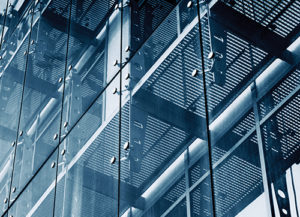
Façade systems on most high-rise buildings fall into three main categories:
a) Curtain wall façade systems that are essentially hung from the upper floor slab with an anchor system at each floor line.
b) Built-up wall façade systems with cavities that sit on and are supported from floor slab below e.g. rain screen- traditional masonry (e.g. brick) construction with a cavity is a form of rain screen
c) Built-up wall façade systems without cavities that sit on and are supported from the floor slab below e.g. pre-cast concrete panels. Exterior Insulation and Finish System (EIFS) or External Thermal Insulation Composite Systems (ETICS) and Structural Insulated Panels (SIPs) are also forms of built-up façade, usually without a cavity.
Deben Moza, Executive Director – Head of Project Management Services, Knight Frank India (Pvt.) Ltd.
Role Of Structural Wall Elements & External Wall Composition

Cladding can be made of any of a wide range of materials including wood, metal, brick, vinyl, and composite materials that can include aluminium, wood, blends of cement and recycled polystyrene, says Shaw. Between the cladding and the wall, there is a cavity. In the event of a fire, this draws hot air up like a chimney, intensifies the fire, and spreads it to the top of the clad area. Brick has excellent fire resistance; planks or weatherboards made from fiber cement or steel have high fire resistance; aluminium and reconstituted timber products have good fire resistance, and timber weatherboards and plywood sheets have poor fire resistance. Aluminium Composite Panel is made of a core material sandwiched between two aluminium faces.
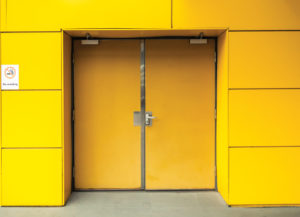
The core material may be polyethylene (which is combustible), a mineral-based material, or a combination of both. Panels of the same appearance may have different core materials; those with a higher proportion of mineral core withstand fire better, but can still be considered combustible. Fire will be spread by the cladding if the core is combustible, adds Shaw. According to ParasuRaman, smoke ventilation must be designed as a system and not pieced together. “As far as smoke vents are considered, our goal here is to prevent vertical travel of smoke and fire via the external façade. If the EN12101 Part 10 tested control system is not integrated with the smoke vents, then vents on the floors above the fire floor could open/remain open, thus transferring smoke from the fire floor to other floors thus breaking down the compartmentation,” he adds. Kanchwala notes, floor to floor ducts and opening need to be sealed with fire-resistant sealants and vermiculate concrete.
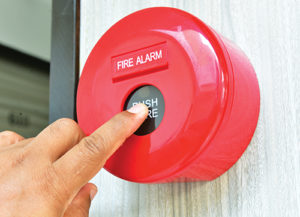
According to Rajamoni, external/ internal load-bearing walls should be made of required fire ratings and the same is not compromised as the load of the building needs to be protected in the event of fire. Therefore, large scale assembly test of the wall and façade assemblies should be done to reduce rapid vertical and horizontal fire spread inside the building.
Combustible materials, which are not permitted or restricted by national fire codes, have been used in the past and are used today in façade assemblies or systems to improve energy performance, reduce water and air infiltration, and for aesthetic design flexibility. This may be due to the lack of understanding or enforcement or other issues in the construction industry supply chain. Moza points out, Foam insulations and/or metal composite materials (MCM) with combustible low-density polyethylene cores tend to be the most prevalent combustible materials in any given high-rise.
Identification of combustible elements in the building façade is the first stage of any assessment, states Ar. Reza Kabul. For new/ recently built buildings, this will be evidenced by the product specifications and architectural details. For older buildings, this can be determined by the composition testing of panels and invasive auditing of the building façade. Cladding systems with combustible elements over extended areas are likely to require data from large-scale tests as this has the most robust correlation to fire risk with the least limitations, adds Reza Kabul.
External Wall Systems

External wall systems generally consist of three things- exterior cladding with air cavity behind, continuous insulation (CI) and water/weather resistive barriers (WRB). The combustibility of all these components can influence the fire performance of the whole assembly. Mostly used exterior cladding are ACPs, HPLs, FRPs, etc. with either combustible, fire retardant or mineral fill core, depending upon the cost and level of fire protection desired. They are installed using various joint systems creating an air cavity (25 to 100 mm) behind it. This air cavity serves the purpose of draining down the rainwater and also causing upward airflow within the cavity in hot weather, thereby removing moisture on the façade and keeping them ventilated. In the event of a fire, this internal cavity along with combustible façade also causes rapid vertical fire propagation to other floors.
The second component of the assembly is a layer of insulation, which is installed on the exterior structure of the building to increase the R-value of external wall for saving energy by insulation. Mostly used CI include XPS (extruded polystyrene), PIR (Polyisocyanurate), Phenolic foams, mineral wool, etc. Their thickness depends upon the climate zone and R-value desired. Combustible insulation along with combustible exterior cladding can worsen the situation in case of fire.
The third component of the assembly is the weather/water-resistive barrier (WRB) installed over the exterior sheathing and under the CI. It is used to prevent moisture damage to the building and also helps to maintain comfort level inside the buildings by regulating relative humidity. Generally used WRBs are either fluid-applied membranes or building wraps.
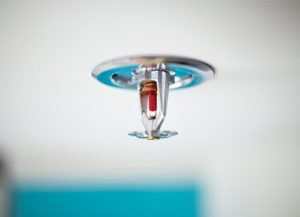
These three components may or may not be combustible and must pass product testing before using them in systems. However, the actual fire behavior of a building façade does not only depend on the fire performance of its components, rather it is dependent on the overall system’s performance. Individually testing these products may not reveal how they will interact and behave when they are used in system/assembly. Sometimes, the cladding may be less combustible while the CI may be highly combustible.
So, in this case it is important to perform assembly testing to study their actual behaviour. In the EU, the fire testing and classification standards for construction products follow European Standard EN 13501-1 that compares ignitability, flame spread, heat release, smoke production and flaming droplets/particles, etc. It classifies material in seven classification levels, from A1 to F based on four fundamental reactions to fire tests which are EN ISO 1182 (Non-combustibility test), EN ISO 1716 (Gross calorific potential test), EN 13823 (SBI Single Burning item test) and EN ISO 11925-2 (Ignitability test).
Ankit Sharma, Member SFPE, Research Scholar, Mechanical and Industrial Engineering, IIT, Roorkee
Passive & Active Fire Safe Protection Methods
According to Ar. Reza Kabul, the fire resistance of an element of construction is a measure of its ability to withstand the effects of fire in one or more ways. Some materials have inherent fire resistance, others need to have steps taken to improve this resistance dissipation ensuring that heat applied to an assembly is rapidly dissipated to other materials or to the air so that the temperature of the assembly is not raised to a critical level.

Active fire protection (AFP) refers to anything that needs a follow-up action in order to help stop or combat a fire, like fire extinguishers. They are reactive and require some form of input from the user in order to protect against the fire. Whereas passive fire protection (PFP) doesn’t require any user input. For instance, a fire safe door can form an effective barrier to stop fires from spreading, but it doesn’t require the user to use the fire safe door and it will help protect against fire regardless of the user is present or not. Similarly, firerated glass and materials are also considered passive fire protection, explains Shaw and Deben Moza.
They are an integral component of the structural fire protection and fire safety in a building, and attempts to contain fires or slow the spread, adds Kanchwala. Active fire safety mechanism includes fire extinguishers, fire safe blankets, sprinkler systems commonly used along with fire detection systems like smoke detectors & CO2 sensors, etc. Passive fire protection safety mechanism includes fire resistant walls, floors, fire/smoke dampers, fire-rated doors, explain Kanchwala, Moza and Rajamoni.
Compartmentalization of the overall building, done through the use of fire-rated walls and floors, prevents or slows the spread of fire from the room of fire origin to other building spaces, limiting building damage and providing more time to the building occupants for emergency evacuation. Dampers are used to prevent the spread of fire/smoke throughout the building through its duct work. Active and passive fire protection systems are meant to work together in the event of a fire, adds Rajamoni. The spread of the fire will be much harder if passive measures are in place while active protection does what it’s meant to.
One should make sure that there are active and passive measures in place that can complement one another and work in tandem to deal with fires and to provide with the very best safety and protection, adds Shaw and Kanchwala. In the event of a fire, the main target is to extinguish and limit the fire spread while simultaneously providing safer evacuation routes. Required Safe Evacuation Time (RSET) must be less than Available Safe Evacuation Time (ASET), points out Sharma. For ensuring complete safety of occupants, either RSET should be less or ASET should be higher which is achieved using a combination of active and passive fire protection methods. None of these systems can provide complete safety to the building alone and should work together for ensuring the highest level of safety.
Smoke Ventilation
Even when well designed, observes Ar Reza Kabul, it is inevitable that doors on escape routes will have to be opened and that smoke will, therefore, flow into the protected area. This danger can be reduced by using lobby access to staircases which provide a form of ‘airlock’ where only one door will be open at any time. The simplest way of stopping smoke spreading within a building is to allow smoke to escape to the outside. This will not extinguish the fire, but it will tend to contain the smoke in its area of origin and gain time for people to escape and for measures to extinguish the fire to be taken. In a single story building, this can be done through roof vents. In multistory buildings, smoke ventilation systems using mechanical vent extraction can be used, explains Reza Kabul.
Automatic smoke ventilation and smoke control form part of active fire protection of the building which, when correctly designed and implemented would prevent smoke build upon the fire floor/s by early smoke release and compartmentalization, also reducing internal temperatures caused by trapped smoke which can cause ceiling flash overs, points out ParasuRaman. Smoke ventilation allows better vision and breathing to the fire officers and occupants with a greater chance of clear partway to fight the fire and for occupants to escape the premises. As we know, weather and structural performance testing is now a standard market practice globally and in India. In the same way, a smoke vent when tested to EN 12101 Part 2 would ensure its best performance in case of a fire emergency, adds ParasuRaman.
Parameters Defining Performance Of Fire Safe Facade Materials
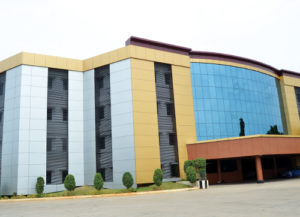
In India, there are numerous fire safety-related codes and standards, however, they are scarcely followed. Worse is the case when it comes to façades, it is mostly influenced by the pure considerations of alluring appearance and pricing, and is yet to hit the nail on the head in terms of fire safe norms and testing methods, notes Shaw. There is an acute lack of awareness about the characteristics of the façade materials, such as combustibility, smoke release, toxicity, ignitability, etc. that contribute to massive fire proliferation. Besides, all stakeholders should be thoughtful of the fact that combat against potential fire hazards can only be effective when façade systems testing are given due importance.

Correct material selection and system design are the two key elements that form the basis of fire safety of a façade system, says Kanchwala. Façade engineers designing fire-safe cladding systems need to know the fire properties of the material being used and their key reaction to fire like ignitability, combustibility, flame spread, and reactions of droplets and smoke. Emphasising the importance of fire-resistant materials, so that a façade must not propagate fire, it must also not let the fire or heat travel from one area to another and it should not disintegrate in the presence of fire for a reasonable amount of time.
According to Sharma, two important parameters that define the performance of fire safe façade materials are their combustibility and smoke production. If façade material is combustible, it will contribute the spread of fire to other parts of the building. Façade materials may also produce toxic smoke which causes more deaths, and toxic content of the smoke will depend upon the materials that they are Fire safe or not. Ar. Reza Kabul warns that the manufacturers can fool anyone easily by providing fire safe test reports for their material. This can be done by making an approved golden sample pass all the tests with flying colours. And then in the factory, raw materials, recipes, and processes could change due to errors or price constraints.
Certification and listing introduce surveillance and trace ability of supply chains and processes to add many layers of checks. It is important for products to feature certification based on user satisfaction as well, adds Reza Kabul. A regular quality maintenance check for all companies to have common compliance through authorised bodies in the subject matter would provide uniform basis to all products in the same category. Since it is a matter of safety when it comes to fire, a common rating system for the products and their performance delivered helps sustain the efficient material manufacturers to remain more available in market.
The Need For Product & System Testing & Certification For Fire Safety

Each element going into a façade would be tested to a certain local or global standard by the individual manufacturer, however, when we piece these elements on the façade together to form the whole system, presently there are no standard practices followed in India as far as fire safe testing a façade, observes ParasuRaman.
A variety of innovative and unique technologies and materials call the necessity of different test methods to gauge the performance of various façade systems/elements. Parameters like properties of ignitability, combustibility, flame spread and other reactions of droplets and smoke are measured using different test methods, notes Kanchwala. One of the comprehensive methods is the Euro-classes classification that uses EN 13501-1. This captures and tabulates the properties of combustibility, smoke and droplet release.
Many other test methods like ASTM D1929 for capturing ignition temperature of the plastic, ASTM E84 for capturing flame spread and smoke-developed are useful for analysing certain types of materials. The certification is generally provided by the third party accreditation providers. E.g., Intertek, Certifire, UL, etc. These bodies inspect the materials under production, witness the test and compliance to the standard set and issue certification for the suitability of the application. The certifying bodies also carry out a periodic audit of the certified products.
The performance expected out of most building materials from a fire safe point is its resistance to fire and not combustibility alone. The resistance time that a material offers counts towards the disintegration of the material, the rate of spread of fire and the valuable escape time it gives the occupant before it is out of control. It should be able to offer a minimum of 30 minutes to two hour fire resistance, depending on the distance from the source of fire calculated or resistance required, advises Kanchwala.
Materials like aluminium composite panels, PU foam metal panels, insulations that are petrochemical-based, etc., can propagate fire. The façade material can be classified based on certain lab tests as ‘B’ class or ‘A’ class and their subclasses. ‘A’ class being the highest for non-combustible fire safe material, it comes at a huge cost that the promoters can hardly afford on a large scale. However, where fireproof enclosure is absolutely essential, the specification needs to adhere to ‘A’ class. All materials used in the construction has to be fire safe and the structure must retain its integrity for a min of 30 minutes as per NFPA 285 code for fire resistance of façades. Two, one or more large scale mock-up tests need to be conducted to validate the design of the system which will be implemented at the site, states Kanchwala.
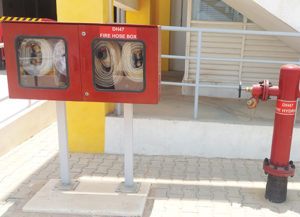
A smoke vent that forms an integral part of the façade, which includes the aluminium, glass, the sealant, gaskets along with the hardware and automation kit must be tested to global standards like the EN 12101 Part 2 and CE marked which would ensure holistic performance of the vent and not just the hardware that goes into it. The entire vent is placed in a fire test chamber and tested to 300°C, then after 5 minutes the vent must open fully within 60 seconds and remain open for a period of 30 minutes, thereafter to pass the system testing, points out ParasuRaman.
According to Moza, an integrated fire protection and life safety system combine the various individual systems (as if it was operating as a single system) such as fire alarm and detection systems, fire-suppression systems, smoke control systems, emergency and standby power systems, security systems, and elevator controls that make up a building’s overall life safety approach. Each of the individual fire safe system is designed, commissioned and tested individually. Integrated system testing is necessary because it ensures that the various controls are operating as intended based on the inputs and outputs of the various individual systems installed by separate entities.

Image Credit : Knight Frank (India) Pvt. Ltd.
The behaviour of the façade system in a fire should be appreciated. Review of the façade product testing reports from appropriate and recognised standard fire safe tests should be carried out to determine the response of the building façade or components of the façade system to fire, reminds Reza Kabul. Where the identity of the façade panel and the whole façade system i.e., fixing, sarking, insulation, etc. cannot be identified with certainty, representative samples of the façade panels need to be taken and sent to an accredited lab to determine the panel core composition and category.
The dimensions of the cavity, type of sarking and type of insulation should also be obtained during the sample taking. Insulation and sarking identification may be carried out visually by experienced practitioners or by material test methods on samples. Large-scale tests for external cladding systems vary depending upon the country, says Sharma. A common feature in all these tests is that a post flash over room fire scenario is considered where the fire source is placed near to the window and flames come out through the opening and start impinging on the external façade.
Either these fire safe tests are corner tests where a sidewall is added to give the corner effect to fire plume as in ISO 13785-2, DIN 4102-20 (Germany), BS 8418-1:2002 (UK), AS 5113:2016 (Australia) or flat wall tests as in NFPA 285, LEPIR (France), SP Fire 105 (Sweden). Fire assessment of the systems in these tests is done on the basis of different criteria mainly flame spread and temperature threshold.
Fire Testing for Products
A fire test is a means of determining whether fire protection products meet minimum performance criteria as set out in a building code or other applicable legislation. Successful tests in laboratories holding national accreditation for testing and certification result in the issuance of a certification listing. The listing is the public domain, whereas the test report itself is proprietary information belonging to the test sponsor. There are many different types of fire tests apart from those on fire stops. Walls and floors themselves can be tested, closures within them, such as windows, fire doors, fire dampers, structural steel, and more. Fire testing must consider all applicable provisions of the intended product certification. It is also prudent to test products in such a manner as to ensure ease of use and broad, economical applications with regards to listing and approval use and compliance.
Few examples of fire testing for products and systems are: ASTM E84 Standard Test Method for the surface burning characteristics of building materials, also known as the Steiner Tunnel Test; DIN 4102 Part 1 fire behaviour of building materials and building components – Part 1: Building materials; concepts, requirements and tests; UL 94 Standard for tests for flammability of plastic materials for parts in devices and appliances; and UL 1479 fire tests of through-penetration fire stops. Test Houses performing the said tests are Exova Warrington U.K, PSB Singapore, Thomas Bell Wright Associates Dubai to name a few.
A fire safe test can also mean an ad hoc test performed to gather information in order to understand a specific hazard, such as a construction or storage configuration. Tests can be bench scale (e.g., flammable liquid flash point), medium-scale (e.g., storage commodity classification), or full scale (e.g., replication of an entire rack storage configuration). Typical information gathered from full-scale testing is heat release rate vs. time, smoke production and species composition, radiant heat, and interaction with fire control or suppression systems.
Vijay Kumar Shaw, Assistant General Manager – BD (West Zone), Alstrong Enterprises India
Fire Spread And Prevention Methods
External fire spread in high rise buildings is affected by an opening, either existing or created by structural failure, allowing heat and flames to exhaust out the building and impinge on other parts of the building, usually above, observes Shaw. Case study and past events would suggest that if the internal fire separation is intact and operational, the commonest cause of fire spread beyond the flat/apartment of origin is through the external spread.
The main design options to ensure fire safety are:
• Prevention: controlling ignition and fuel sources so that fires do not start
• Communications: if ignition occurs, ensuring occupants are informed and any active fire systems are triggered
• Escape: ensuring that occupants of buildings and surrounding areas are able to move to places of safety
• Containment: fire should be contained in the smallest possible area, limiting the threat to life safety and the extent of property likely to be damaged
• Extinguishment: ensuring that fire can be extinguished quickly and with minimal consequential damage

A simple, low-intensity fire near to the exterior parts of the building can lead to a major fire accident as what happened in the Grenfell tower accident in the UK (2017). In some cases, observes Sharma, the intensity of internal fires (which are away from the windows or balcony) may also increase leading to flashover conditions inside the room. These flashover fires easily come out of the building via windows and doors and start impinging on external façade. If this external façade is also combustible then the fire starts spreading vertically and enters other floors of the building, thereby worsening the situation even more.
According to Kanchwala, floor compartmentation at the perimeter edge of the slab and curtain wall and between floor to floor is mandatory now as per NBC 2016 guidelines and it is important to stop the spread of fire internally. Usage of vermiculate concrete and fire-resistant sealant between floor to floor to seal the gaps and cutout is carried out everywhere. Interior fires are intervened and controlled by automatic sprinkler systems or by firefighters, says Moza. However, when the fire outgrows fire fighter’s efforts or the sprinkler system and reaches the flashover stage, it leaps out from the openings onto the exterior façade or cavities behind the façade of the building causing “leapfrog” effect.
At this stage, if the façade material delaminates, exposing the core, if the core of the façade material is combustible, if the cladding system components such as sealants, linings, insulation are combustible, the flames start consuming the combustible material on the façade, spreading along the surface of the façade and along the cavities behind the façade. If the floor slab fire stopping is absent or fire stop material is not approved and not installed as per standards, if the curtain wall is not listed, the flames penetrate through the gaps and reach the upper floors. Flames can even propagate downwards if the material on façade is flammable. Thakur too recalls that an overall non-combustible assembly with an internal fire protection system would minimise the damages due to façade fire and leapfrog effect of the fire spillover from the event zone.
Materials with low thermal transference and higher fire ratings shall be used to enhance fire safety, says Reza Kabul. Additionally, a façade can act as a buffer to stop the fire from entering inside the structure while facilitating firefighting. One or more large scale mock-up tests need to be conducted to validate the design of the system which will be implemented at the site. Thorough installation inspection to keep a check on the quality and replicability of the installation should be done. Floor to floor compartmentation at the perimeter edge of the slab and curtain wall is important to stop the spread of fire internally.
Fire Stops & Smoke Stops
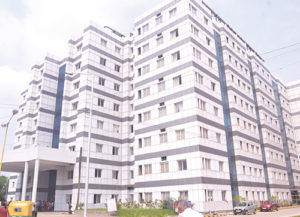
A fire stop is a sublime fire protection measure that seals openings and joints in a fire-rated wall, minimising fire escalation. They hinder the transference of smoke and fire through cracks and crevices in walls and floor assembly. These are available in varied forms and materials like cementitious mortar, silicone, rubber, etc. Fire stop materials and systems are used to ensure the fire is contained within the compartment created as part of the fire resistance strategy. Fire stopping systems are tested and listed for specific material combinations and designs. Fire stops play a very important role in fire safety to check the fire and smoke in a confined area of the fire. Usually, they are in 3 major areas: between the floor edge and façade, between façade and cabin partitions and in-service shafts.
There is a common misconception between the smoke stop and fire stop. The fire stops are expensive products and are essentially put in electrical shafts to seal at floor levels or are between compartments above the false ceiling level where services cross. But, when it comes to façades, it’s actually used only on very few projects and a lesser alternative called a smoke stop is used. The smoke stop is much cheaper and only stops the smoke. A fire stop for façade makes sense only if the façade is also fire rated to some extent. A fire stop or smoke stop is the filler material or construction between the façade and the structure. Vertical or horizontal, all façades will have gaps at interface junctions and this is where the smoke and fire stop needs to be used. It acts as the barrier for fire or smoke to travel from one compartment to the other adjacent or vertical compartment.
Effective Methods For Prevention Of Facade Fire

A slew of fire accidents occurred in less than a month in India, damaging human lives, properties and goods. The fire that broke out in a factory in Delhi, Mumbai’s Kamala Mills rooftop hotels and Madurai’s Meenakshi temple were disasters waiting to happen. Initial findings suggest that storing inflammable materials, blocking exit passages, overhanging electrical wirings are some of the causes. These incidents should be treated as a wake-up call.
ParasuRaman opines that the major causes of building fire are poor design and execution, which can be due to lack of understanding or budget where we skimp on certain crucial elements of the systems put in place and secondly lack of maintenance of those systems. Fire norms should not only be followed for obtaining occupancy certificates but must be implemented well, tested and maintained for the life of the building. Adopting international best practices in fire and life safety and tailor them to suit our local requirements, and following our local fire bylaws and codes to ensure the safest outcome when we have an unforeseen fire emergency is the best way forward, he adds.
Building awareness among citizens about fire prevention and protection measures is also of paramount importance, says Moza. There are many offices, high rise buildings and religious places having firefighting equipment installed, but hardly any person has the knowledge of using them. Lack of maintenance makes the equipment’s dysfunctional. Organising firefighting workshops once in six months in localities/ mohallas/schools with the involvement of local councilors/ elected representatives is one way to achieve the aforementioned. For fire-safe facades, certified and tested systems must be installed rightly on projects which are also monitored closely by the stakeholders. In India, awareness of the dangers of fire is there, but the approach to prevent it is still picking up. Fire rating for façades has remained fairly absent from building regulations even though there are codes and tests.
Today, no building is approved without adherence to fire safety norms and fire department NOC. The stakeholders do realise the importance of human life and the importance of fire safety and invest in it.
Fire Safety Audit (FSA)

According to Shaw, Fire Safety Audit (FSA) is found to be an effective tool to assess fire safety standards of an organisation or an occupancy. It is aimed to assess the building for compliance with the National Building Code of India, relevant Indian standards and the legislations enacted by state governments and local bodies, on fire prevention, fire protection and life safety measures.
“Although FSA is an effective tool to assess fire safety standards of an occupancy, there are no clear provisions in any of the safety legislations regarding the scope, objective, methodology and periodicity of a fire safety audit. Therefore, FSA should be made mandatory all over India and the work should be entrusted to independent agencies”, states Shaw. It is reasonable to have a fire safety audit every year. There is a need to revisit fire safety audit regulations and state fire services as well, he adds.
High-rise buildings have unique challenges related to fire protection such as longer egress times and distance, evacuation strategies, fire department accessibility, smoke movement and fire control. The only evacuation method in case of fire is the staircase. So, the fire protections of high-rise buildings have gained significant attention worldwide.
National Building Code – Fire Precautions

• Dangers to avoid: According to the code, “Every building shall be constructed, equipped, maintained and operated as to avoid undue danger to the life and safety of the occupants from fire, smoke, fumes or panic during the time period necessary for escape.”
• Rules for the exits: Under the code, while doorways, corridors, passageways are defined as exits, elevators are not kept in that category. The code says that no alterations should be made in a building to reduce the number, width or protection of exits as are required.
• Mandatory fire safety drills: As fire may cause a serious issue in the case of high-rises unless a plan for orderly and systematic evacuation is prepared, fire drills should be conducted at least once in three months in high-rise buildings during the first two years of its construction, says the National Building Code 2005. After that, such drills have to be conducted once in six months.
• Fire detection and alarm systems: In large size buildings, where a fire may not itself provide adequate warning to the occupants, automatic fire detection, and alarm facilities are a must.
• Installation of fire extinguishers: Based on their occupancy, use and height, all buildings have to be protected by fire extinguishers, wet risers, automatic sprinkler installations, water sprays, etc.
Vijay Kumar Shaw, Assistant General Manager – BD (West Zone), Alstrong Enterprises India (Pvt) Limited
Fire Mitigation: Role of Risk Assessment & Risk-Informed Methodologies

Based on several recent fires in high-rise buildings clad with combustible wall insulation systems, global enforcement authorities are revisiting their existing building inventories to assess potential risks. There are several risk factors that may impact the level of risk and the consequent priority for inspection and/or remediation. Authorities are seeking means to make these assessments and decisions based on them, using a risk-informed methodology.
Such a risk-informed methodology involves: the identification of key variables (e.g., component materials, connection systems, installation techniques and geometries, occupancy type, age of application, proximity to other structures, external factors such as weather, building fire protection systems, etc.); characterization of those variables in terms of risk or mitigation potential; and incorporation of them into an engineering-based risk model whose output will be a means for authorities to prioritise mitigation. Because there is limited test data or statistics to further inform a quantitative approach to risk ranking or scoring, a qualitative assessment is being utilised based on engineering judgment.
The goal of this project has been to develop and make available a risk assessment methodology to assist global authorities to assess the risks and prioritise inspection/remediation efforts for the high-rise building inventory in their jurisdiction with exterior wall assemblies containing combustible components. The methodology is more qualitative rather than quantitative and follows internationally recognised risk assessment approaches. The method does not recommend specific mitigation measures, but rather prioritises the need for mitigation based on risk factors and provides suggestions for possible mitigation to be assessed on a project by project basis.
Deben Moza, Executive Director – Head of Project Management Services, Knight Frank India (Pvt.) Ltd
